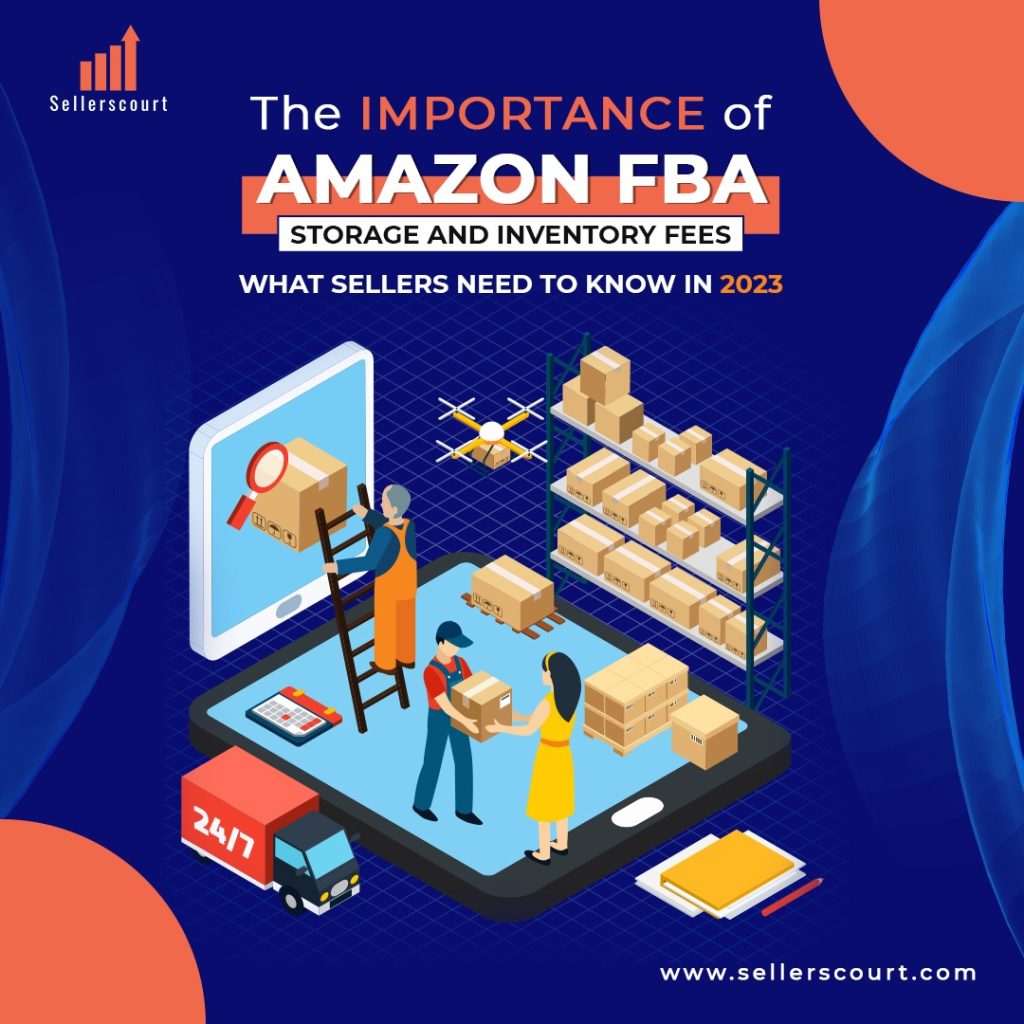The Importance of Amazon FBA Storage and Inventory Fees: What Sellers Need to Know in 2023

Understanding and Managing Amazon FBA Storage and Inventory Fees
As an Amazon seller, you’ve probably heard about Fulfillment by Amazon (FBA) and how it can streamline your e-commerce business. However, to make the most of this service, it’s crucial to understand the costs associated with it. One of the primary expenses that often go overlooked are the Amazon FBA storage and inventory fees. In this blog post, we will delve into the importance of these fees and how they impact your bottom line in 2023.
Sellerscourt, an Amazon agency with 45 years of combined experience and offices in London and New York, is here to help you navigate these fees and optimize your e-commerce business. With our extensive knowledge and expertise, we’ll provide you with valuable insights to help you manage your FBA storage and inventory fees effectively.
Understanding Amazon FBA Storage Fees
Amazon FBA storage fees are charges incurred for storing your inventory in Amazon’s fulfillment centers. These fees vary depending on the time of year, size, and weight of your items. In general, storage fees are higher during the peak holiday season (October-December) due to increased demand for warehouse space.
There are two types of storage fees: monthly and long-term. Monthly storage fees are based on the volume (in cubic feet) of your inventory and are charged on a per-unit basis. Long-term storage fees apply to items that have been in Amazon’s fulfillment centers for more than 365 days. These fees are assessed on a per-unit basis and can be significantly higher than monthly storage fees.
The Impact of FBA Storage Fees on Your Business
Properly managing your FBA storage fees is essential for several reasons:
- Profitability: High storage fees can eat into your profit margins, making it more challenging to maintain a profitable business. By understanding and minimizing these fees, you can improve your bottom line.
- Inventory Management: Efficient inventory management is crucial for a successful e-commerce business. By monitoring your FBA storage fees and inventory levels, you can make informed decisions about when to restock and how much inventory to store at Amazon’s fulfillment centers.
- Avoiding Long-Term Storage Fees: As mentioned earlier, long-term storage fees can be significantly higher than monthly storage fees. By keeping an eye on the age of your inventory, you can take action to avoid these costly charges.
Managing FBA Inventory Storage
Here are some strategies to help you manage your FBA inventory storage effectively:
- Forecast Demand Accurately: By accurately predicting your sales, you can ensure that you have the right amount of inventory on hand. This will help you avoid both stockouts and excess inventory, both of which can lead to increased FBA storage fees.
- Monitor Inventory Performance: Keep a close eye on your inventory performance metrics, such as inventory age, sell-through rate, and days of supply. These metrics can help you identify slow-moving items and make informed decisions about pricing, promotions, or removal.
- Use Inventory Placement Service (IPS): IPS allows you to send your inventory to a single Amazon fulfillment center, reducing the need to split shipments across multiple locations. While there is an additional fee for this service, it can help you save on storage fees by simplifying inventory management.
- Create Removal Orders: If you identify items that are not selling well and are at risk of incurring long-term storage fees, consider creating a removal order. This will allow you to either dispose of the inventory or have it returned to you, thus avoiding the long-term storage fees. Keep in mind that there may be a fee associated with removal orders, so weigh the costs before making a decision.
- Utilize Amazon’s FBA Inventory Age and Inventory Health Reports: These reports provide valuable insights into your inventory’s performance, age, and potential long-term storage fees
